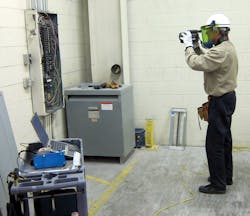Maintenance vs. Repair, Part 3
In Part 2, we used the example of a connection failure. No doubt, you can save money by skipping those infrared surveys. But you would save this money at great cost.
How much does it cost to perform an infrared scan on a given cabinet, perform AC resistance tests on any suspect connections, then replace the hardware and properly torque the fasteners? Got a dollar figure in mind?
Now, suppose the unmaintained connection continues to deteriorate (it will). As its resistance gets greater and greater, so does the voltage potential across it. Eventually, the voltage will get high enough to arc across the connection. This is dangerous enough, but what if the arcing is to the cabinet wall or to another phase conductor? What if all this arcing creates ionization and then an arc blast?
Suppose this is at a 6,000A, 480V service. The cost in terms of equipment replacement easily overshadows the cost of that maintenance. But it’s minor compared to the lost production time.
This math helps clarify your choices.
